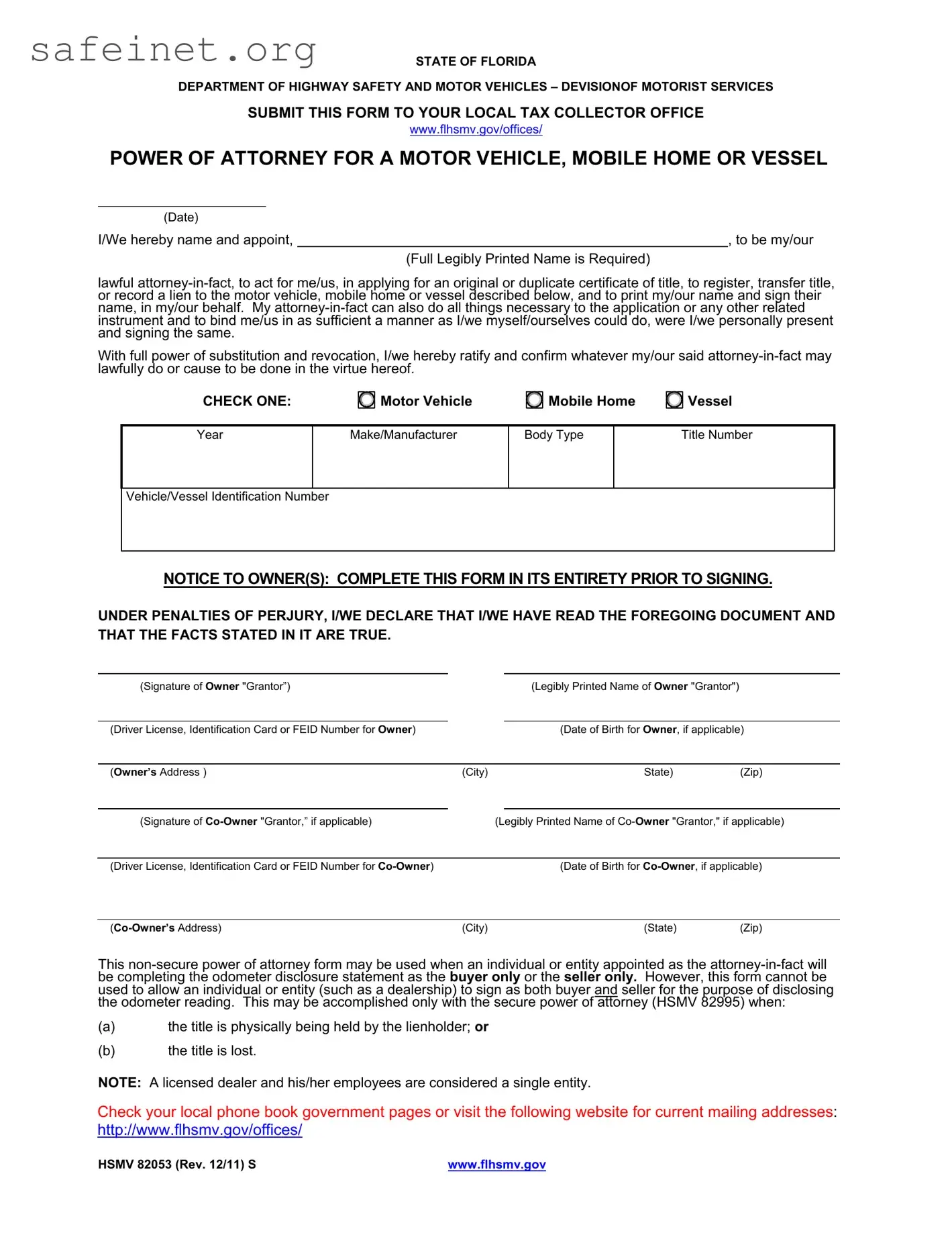What is the Vehicle POA form 82053?
The Vehicle Power of Attorney (POA) form 82053 is a legal document that allows an individual to grant someone else the authority to act on their behalf in matters related to their vehicle. This might include tasks such as signing documents, transferring ownership, or registering the vehicle.
Who can use the Vehicle POA form 82053?
Any individual who owns a vehicle in the United States can utilize the Vehicle POA form 82053. This can include both personal and commercial vehicle owners looking to delegate responsibilities to another person or entity.
What are the typical uses of the Vehicle POA form 82053?
The form is often used for transactions like selling a vehicle, registering a vehicle in a different state, or handling title transfers. It can simplify processes when the owner is unable to attend to these matters personally.
How do I complete the Vehicle POA form 82053?
To complete the form, you will need to provide your personal information, the details of the vehicle, and the information of the individual you are granting power of attorney to. It’s important to review all entries carefully to ensure accuracy.
Is the Vehicle POA form 82053 valid in all states?
While the Vehicle POA form 82053 is recognized in many states, its acceptance can vary based on state laws. It is advisable to check with your local Department of Motor Vehicles (DMV) or a legal expert to confirm its validity in your state.
Do I need to notarize the Vehicle POA form 82053?
Notarization may not be required in every state for the Vehicle POA form 82053, but having it notarized can add an extra layer of authenticity and is often a good practice. Always verify your state’s requirements before submission.
Can I revoke or cancel the Vehicle POA form 82053?
Yes, as the principal, you have the right to revoke the Vehicle POA at any time as long as you are of sound mind. It is recommended to inform the agent and any relevant authorities or institutions about the revocation.
What happens if the person I appoint as my agent on the form dies or becomes incapacitated?
If your appointed agent passes away or becomes incapacitated, the power granted through the Vehicle POA form 82053 will typically become void. You may need to create a new form or choose another individual to take on these responsibilities.
Are there any limitations to what an agent can do under the Vehicle POA form 82053?
Yes, the authority of the agent is limited to the specific actions outlined in the Vehicle POA form. If additional tasks are needed, a new or amended form must be completed. It is important to clearly define the scope of authority on the form.
Where can I obtain the Vehicle POA form 82053?
The Vehicle POA form 82053 can typically be obtained from a state’s Department of Motor Vehicles website, as well as various legal document services. If preferred, you may also seek assistance from a legal professional to ensure you receive the correct version.

